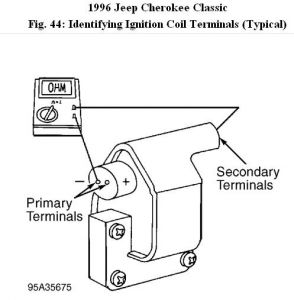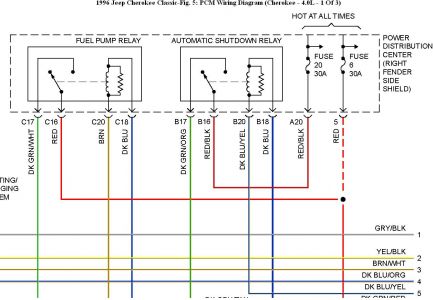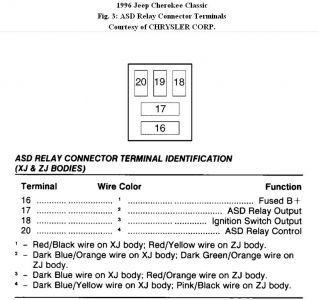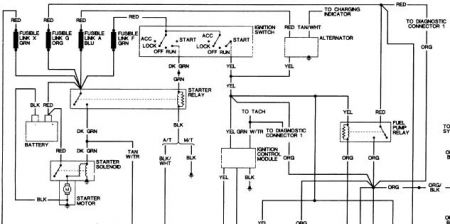Hi j.stieg,
Here are the diagnostic procedures for no start conditions.
TEST NS-1A - QUALIFYING NO START CONDITION
1. Turn ignition off. Disconnect spark plug cable at spark plug No. 1. Connect cable terminal to a spark plug tester. Connect spark plug tester to engine ground. Go to next step.
CAUTION:When checking for spark, consider 1-2 sparks as a no-spark condition.
2. While cranking engine for 10 seconds, observe for spark. If a good spark occurs, perform TEST NS-2A
. If a good spark does not occur, reconnect spark plug cable and go to next step.
3. Turn ignition off. Disconnect ignition secondary cable from distributor. Connect cable terminal to a spark plug tester. Connect spark plug tester to engine ground. Go to next step.
4. While cranking engine for 10 seconds, observe for spark. If a good spark occurs, replace distributor cap, rotor or cables as necessary and perform TEST VER-1A
. If a good spark does not occur, go to next step.
5. Turn ignition off. Disconnect other end of ignition secondary cable from ignition coil. Using an external ohmmeter, check resistance between both ends of ignition secondary cable. If resistance is more than 15,000 ohms, replace ignition secondary cable and perform TEST VER-1A. If resistance is 15,000 ohms or less, go to next step.
6. Remove distributor cap and observe distributor rotor while cranking engine. If rotor does not turn, repair distributor drive system as necessary and perform
TEST VER-1A. If rotor turns, go to next step.
7. Reinstall distributor cap and ignition secondary cable. Disconnect ignition coil connector. Inspect connector and terminals for damage. Repair connector and terminals as necessary and perform TEST VER-1A. If connector and terminals are okay, go to next step.
8. Turn ignition on. Using scan tool in voltmeter mode, check voltage on ignition coil connector, ASD relay output circuit (Dark Green/Orange wire). Using scan tool, actuate generator field. If voltage is 10 volts or less, repair open ASD relay output circuit and perform
TEST VER-1A. If voltage is more than 10 volts, go to next step.
9. Turn ignition off. Using an external ohmmeter, check resistance across ignition coil primary terminals. See
Fig. 44. If resistance is not 0.95-1.20 ohms, replace ignition coil and perform TEST VER-1A. If resistance is as specified, go to next step.
10. Check resistance across ignition coil primary and secondary terminals. See Fig. 44. If resistance is not 11,300-15,300 ohms, replace ignition coil and perform
TEST VER-1A. If resistance is as specified, go to next step.
11. Disconnect PCM Black connector. Inspect connector and terminals for damage. Repair connector and terminals as necessary and perform TEST VER-1A. If connector and terminals are okay, go to next step.
12. Using scan tool in ohmmeter mode, check resistance of PCM Black connector, ignition coil driver circuit (Gray wire). If resistance is less than 5 ohms, repair short to ground in ignition coil driver circuit and perform TEST VER-1A. If resistance is 5 ohms or more, go to next step.
13. Using an external ohmmeter, check resistance of ignition coil driver circuit (Black/Gray wire at ignition coil connector) between PCM Black connector and ignition coil connector. If resistance is more than 5 ohms, repair open ignition coil driver circuit and perform TEST VER-1A. If resistance is 5 ohms or less, go to next step.
Check valve timing. Correct valve timing as necessary and perform TEST VER-1A. If valve timing is okay, replace PCM and perform TEST VER-1A.

Thursday, October 28th, 2010 AT 9:27 AM






